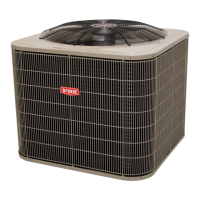
Do you have a question about the Bryant Legacy 215B and is the answer not in the manual?
| Type | Heat Pump |
|---|---|
| SEER Rating | Up to 15 |
| HSPF Rating | Up to 8.5 |
| Refrigerant | R-410A |
| Number of Stages | 1 |
| Compressor Type | Single Stage |
| Warranty | 10-year parts limited warranty |
Warning about potential electrical shock during installation or servicing and steps to prevent it.
Caution regarding sharp edges on sheet metal parts and necessary precautions.
Steps for unpacking, inspecting unit, and checking rating plate for installation.
Instructions for securing the unit to a level mounting pad and hurricane tie-downs.
Specifies minimum clearances needed around the unit for airflow, service, and placement.
Details acceptable outdoor temperature ranges for cooling and heating modes.
Procedure to verify the defrost thermostat is properly located and securely attached.
Guidance on connecting refrigerant tubing to service valves, avoiding bends and contact.
Information on connecting the outdoor unit to compatible indoor units and subcooling requirements.
Instructions for making refrigerant tubing connections using sweat or flare fittings.
Steps for installing or replacing the indoor piston for correct system operation.
Procedure for installing the liquid line filter drier inside the unit.
Instructions for evacuating the system to 500 microns using the deep vacuum method.
Important checks to ensure tubing is not rubbing and wiring is secure.
Guidelines for wiring, including compliance with codes and proper connections.
Instructions for routing and connecting 24v control wires to the unit.
Ensuring all factory and field wire connections are secured properly.
Requirement to furnish power to the crankcase heater before starting the unit.
Refer to individual instructions for installing kits or accessories.
Steps to properly start up the system after installation, including thermostat settings.
Detailed explanation of system operation in cooling, heating, and defrost modes.
Explanation of the time/temperature defrost control and initiation procedure.
Procedures for checking and adjusting system refrigerant charge using subcooling or superheat.
Specific charging method (subcooling) for units with cooling mode TXV.
Specific charging method (superheat) for units with indoor pistons.
Guidance on using the heating check chart to verify system refrigerant charge.
Essential checks to perform before leaving the job site for proper installation.
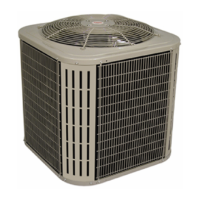
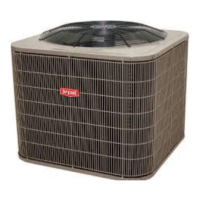
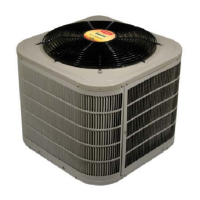
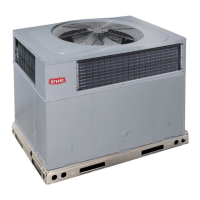
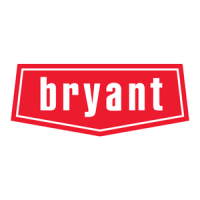
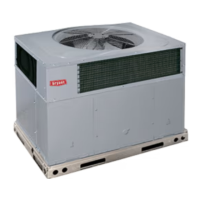



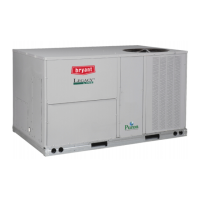


